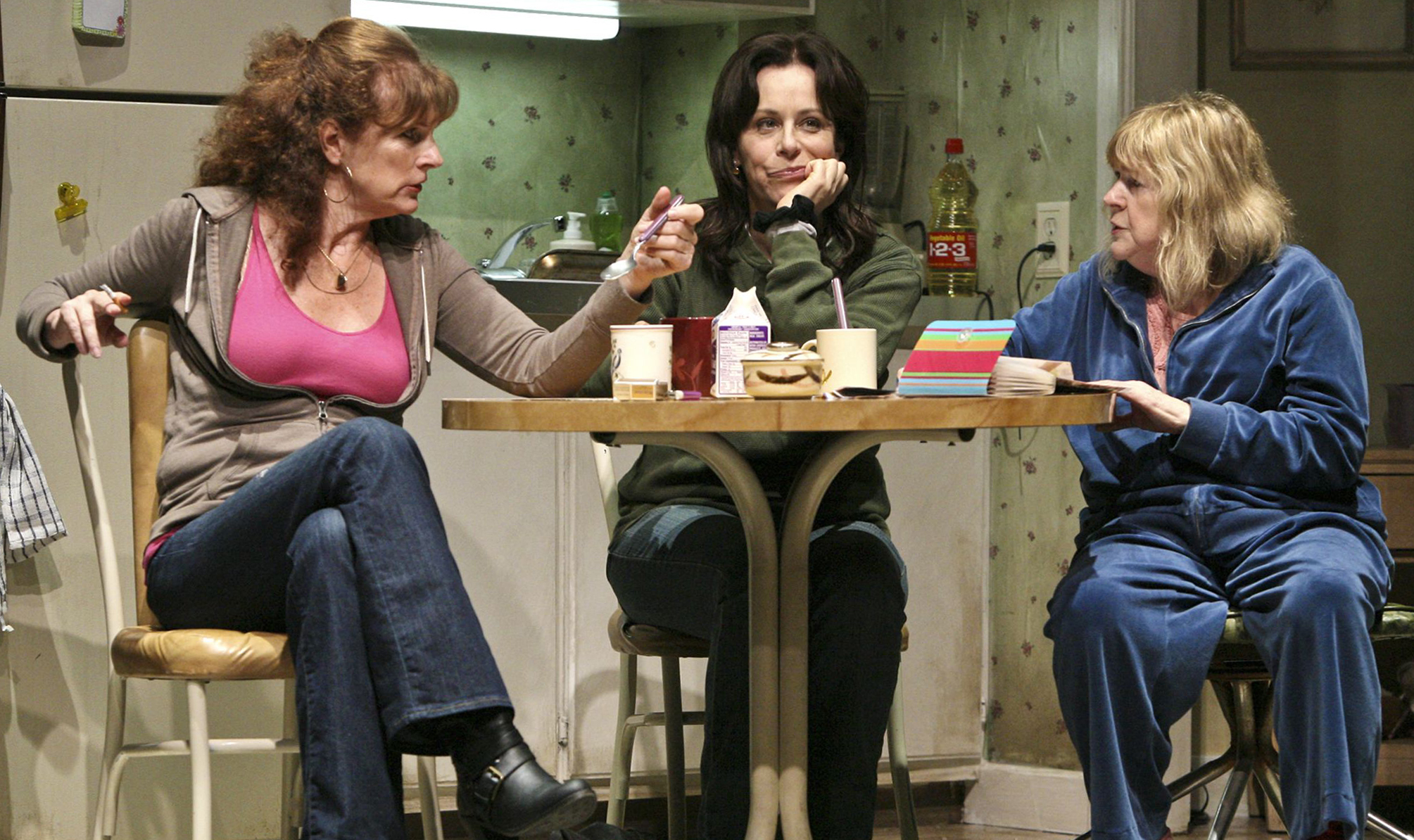Growing up is already a difficult process, but when no one is there to help guide or protect, the odds of succeeding become very slim. Such is the situation for blue-collar, South Boston native Margaret “Margie” Walsh in David Lindsay-Abaire’s “Good People.”
Lindsay-Abaire’s play explores the life of a “Southie” and whether one makes it out of the city because of luck or because of the choices one makes.
The story revolves around Margie (Jane Kaczmarek) as she struggles to support her daughter and keep a roof over their heads. Margie has been let go from her job at the Dollar Mart because of her constant tardiness, which is usually caused by her daughter Joyce, who is mentally incapable of caring for herself.
Kaczmarek’s comedic timing, hard Boston accent and tough demeanor result in a deep and fully realized character. Kaczmarek’s performances allow the audience to empathize with the hardships Margie faces and identify with her strength to keep going at all costs.
Kaczmarek’s relentless search to find a job to support her disabled daughter becomes more and more difficult throughout the play.
Still, humor persists in the play despite the situations many of the characters are in, giving the audience much needed breaths of fresh air.
Margie’s best friend Jean (Sara Botsford) provides an additional source of great comic relief, as well as a support for Margie as the latter looks for a new job. Botsford does a nice job of bringing wit to every situation she enters, and she plays her role with an engrossing sense of honesty.
Despite Dottie’s (Marylouise Burke) strict nature as a landlord, her humor also steals the show. The makeshift rabbit figurines that she sells and her brawling relationship with Jean keep the audience laughing.
Craig Siebels’ stunning sets help provide vital details of the characters. The church hall that Margie, Dottie and Jean spend much of their time in highlights the bond the women have with one another.
The set designs by Siebels also succeed in showing the stark contrast between the life Margie lives in South Boston and the comfortable life of her ex-boyfriend Mike (Jon Tenney) in Chestnut Hill. Siebels makes a stunning set for Mike’s living room that displays his relative affluence while Margie’s apartment is filled with mismatched items that look like they were purchased from a secondhand shop.
Although Margie’s apartment looks less glamorous than Mike’s, the lighting in her apartment indicates the hope Margie has of finding a job, while the shadows casted in Mike’s house suggest hidden secrets within the home.
With the help of remarkable performances and beautiful set designs, “Good People” delivers a collection of performances that provoke the audience to think about class, race and gender when they leave the theater.
““ Brittany Taylor
Email Taylor at btaylor1@media.ucla.edu.
